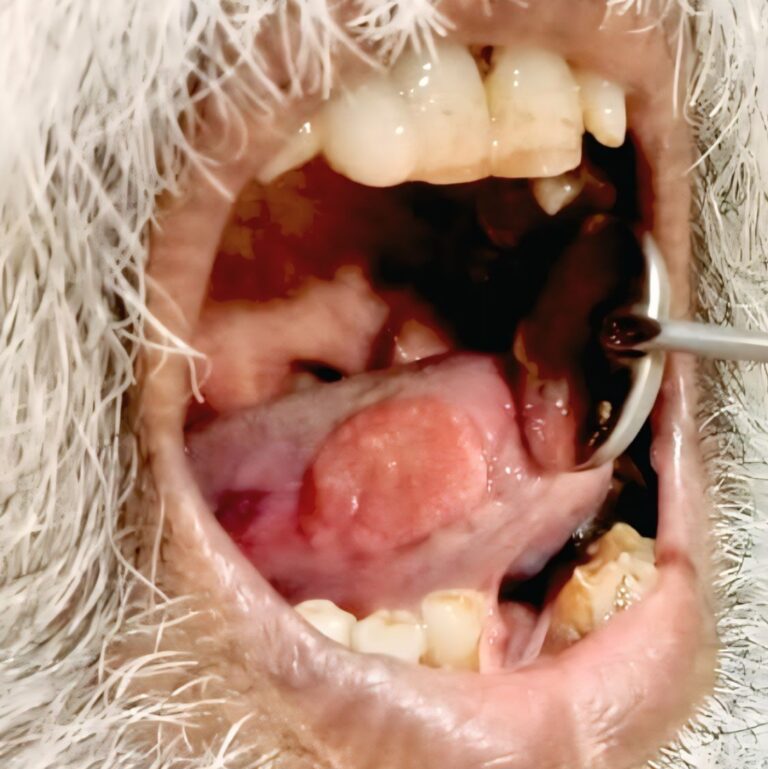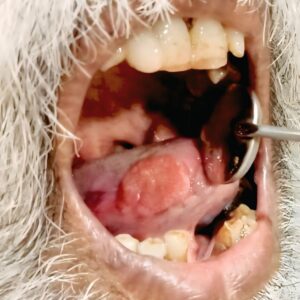
Beware: The Hidden Mouth Cancer Symptoms You Might Miss
Oral cancer, commonly known as mouth cancer, is a severe medical condition that may arise in different areas of the mouth, such as the lips, tongue, gums, inner cheeks, roof of the mouth, or throat. Detecting mouth cancer symptoms early is vital for improving treatment success and survival rates.
Early identification of mouth cancer symptoms is critical for improving treatment outcomes and survival rates, which can be as high as 85% for localized cases. This blog post offers an original, in-depth exploration of oral cancer symptoms, including where they occur, the types of mouth cancer, common and uncommon signs, and systemic effects. Crafted with SEO best practices, this post uses the focus keyword naturally to educate and empower readers to take charge of their oral health.

Table of Contents
What Is Mouth Cancer?
Mouth cancer occurs when abnormal cells grow uncontrollably in the oral cavity or oropharynx (the throat area behind the mouth). It falls under the umbrella of head and neck cancers and is often linked to risk factors like tobacco use, heavy alcohol consumption, HPV infection, or prolonged sun exposure (for lip cancer). While risk factors provide context, this post focuses on oral cancer symptoms, detailing their presentation across different oral regions and cancer types to help readers recognize warning signs early.
Why Early Detection of Mouth Cancer Symptoms Matters
Detecting mouth cancer symptoms early can significantly improve prognosis. Many symptoms mimic benign conditions like cold sores or dental issues, which can delay diagnosis. By understanding the signs, their locations, and their implications, you can seek timely medical advice, potentially preventing the cancer from advancing to more severe stages.
Mouth Cancer Symptoms by Location at Mouth
Mouth cancer symptoms vary depending on where the cancer develops. Below, we explore symptoms based on their occurrence in specific parts of the mouth.
1. Lips
- Persistent sores or ulcers: Non-healing sores on the outer or inner lip, often with crusty or scaly edges, are common oral cancer symptoms on the lips. These may bleed easily.
- Discoloration: White or red patches on the lips that don’t resolve can indicate precancerous or cancerous changes.
- Lumps or thickening: A firm, painless lump or thickened area on the lip may develop, especially in sun-exposed areas.
2. Tongue
- Ulcers or sores: Painless or painful sores on the tongue, particularly on the sides or underside, are key mouth cancer symptoms.
- Color changes: Red or white patches on the tongue that persist beyond two weeks may signal cancer.
- Mobility issues: Difficulty moving the tongue or a feeling of stiffness can occur as tumors grow.
3. Gums
- Swelling or lumps: Firm, painless swellings on the gums, often near teeth, are concerning mouth cancer symptoms.
- Bleeding: Unexplained gum bleeding, unrelated to brushing or gum disease, may indicate cancer.
- Tooth mobility: Tumors in the gums can cause teeth to loosen or shift unexpectedly.
4. Inner Cheeks
- Thickened patches: White or red patches inside the cheeks, often rough or leathery, are potential oral cancer symptoms.
- Sores: Non-healing sores or erosions in the cheek lining can develop.
- Pain or numbness: Persistent discomfort or loss of sensation in the cheek may occur.
5. Palate (Roof of the Mouth)
- Ulcers or growths: Sores or raised growths on the hard or soft palate are significant symptoms of mouth cancer.
- Painful swallowing: Tumors on the palate can make swallowing food or liquids difficult.
- Color changes: Red or white discoloration that doesn’t resolve is a warning sign.
6. Floor of the Mouth
- Lumps or swelling: A firm mass under the tongue may indicate cancer.
- Sores or patches: Persistent ulcers or color changes in this area are concerning symptoms of mouth cancer.
- Speech difficulties: Tumors can interfere with tongue movement, affecting speech clarity.
7. Throat (Oropharynx)
- Sore throat or hoarseness: A persistent sore throat or croaky voice, lasting over two weeks, is a key symptom.
- Swallowing issues: Feeling like something is stuck in the throat or pain when swallowing can occur.
- Lump in neck: Swollen lymph nodes in the neck may indicate cancer spread from the oropharynx.
Types of Mouth Cancer and Their Symptoms
Mouth cancer can present in various types, each characterized by unique symptoms.
Below, we categorize mouth cancer symptoms into precancerous, benign, and malignant types.
1. Precancerous Symptoms
Precancerous conditions, like leukoplakia or erythroplakia, may develop into cancer if untreated. Symptoms include:
- White patches (leukoplakia): Thick, white areas in the mouth that cannot be scraped off.
- Red patches (erythroplakia): Velvety red spots, often more likely to become cancerous than white patches.
- Textural changes: Areas affected by cancer may feel rough, uneven, or leathery to the touch.
- Mild discomfort: Slight irritation or sensitivity in the affected area, though often painless.
2. Benign Cancer Symptoms
Benign oral tumors, such as fibromas or papillomas, are non-cancerous but may mimic symptoms of mouth cancer. These include:
- Painless lumps: Small, firm growths in the mouth or lips that grow slowly.
- Smooth patches: Uniform, non-ulcerated areas that don’t change color.
- Minimal symptoms: Benign tumors often cause little to no discomfort unless irritated.
- Non-growing masses: Unlike malignant tumors, benign growths typically remain stable in size and do not spread to other areas.
3. Malignant Cancer Symptoms
Malignant mouth cancer, such as squamous cell carcinoma (the most common type), presents more aggressive symptoms of mouth cancer:
- Non-healing ulcers: Sores with irregular edges that persist beyond two weeks.
- Rapidly growing lumps: Firm, painless masses that increase in size over time.
- Functional issues: Difficulty chewing, swallowing, or speaking due to tumor growth.
- Bleeding or pain: Persistent bleeding or discomfort in the affected area.
Common Mouth Cancer Symptoms
Some mouth cancer symptoms are more frequently reported across all locations and types. These include:
- Persistent mouth ulcers: Sores that don’t heal within two to three weeks.
- White or red patches: Discoloration in the mouth that persists.
- Unexplained lumps: Painless swellings in the mouth, lip, or neck.
- Persistent discomfort or pain: A continuous aching or stinging sensation in the mouth that lingers without an obvious cause.
- Difficulty with oral functions: Challenges with chewing, swallowing, or speaking.
These symptoms are often mistaken for minor issues like infections or dental problems, making awareness crucial.
Uncommon Mouth Cancer Symptoms
Less common symptoms of mouth cancer may still indicate a problem and should not be ignored:
- Bad breath (halitosis): Persistent foul breath, despite good oral hygiene, due to tissue breakdown.
- Jaw stiffness: Difficulty opening the mouth fully (trismus), caused by tumor growth affecting jaw muscles.
- Altered taste perception: A lingering metallic or unusual taste in the mouth, unrelated to food or dietary changes.
- Ear pain: Referred pain to the ear, often without an ear infection, due to nerve involvement.
Facial asymmetry: Swelling or growth causing visible changes in facial structure.

Systemic Symptoms of Mouth Cancer
As mouth cancer progresses, it can cause systemic symptoms that affect the whole body, often indicating advanced stages:
- Unexplained weight loss: Difficulty eating or swallowing can lead to significant, unintended weight loss.
- Fatigue: Persistent tiredness or weakness due to the body’s response to cancer.
- Swollen lymph nodes: Firm, painless lumps in the neck or under the jaw, indicating possible cancer spread.
- Fever or night sweats: Rare but possible in advanced cases, reflecting systemic inflammation.
- Generalized pain: Discomfort beyond the mouth, such as in the throat or neck, as the cancer affects surrounding tissues.
These systemic symptoms of mouth cancer often signal the need for urgent medical evaluation.
How to Monitor for Mouth Cancer Symptoms
Regular self-examinations can help detect symptoms of oral cancer early. Follow these steps monthly:
- Set up: Use a mirror, good lighting, and clean hands or gloves.
- Lips: Check outer and inner lips for sores, patches, or lumps.
- Gums and inner cheeks: Inspect for discoloration, swelling, or ulcers; gently press to detect any unusual masses.
- Tongue: Examine all surfaces for abnormalities and test mobility.
- Palate and throat: Inspect for growths or discoloration.
- Neck: Feel for swollen lymph nodes under the jaw or along the neck.
If symptoms of oral cancer persist for more than two weeks, seek advice from a healthcare professional or dentist.
When to Seek Medical Advice
Persistent symptoms of oral cancer, such as sores, patches, or swallowing difficulties lasting over two weeks, require professional evaluation. Dentists often detect oral cancer during routine checkups, so regular dental visits are essential. Bring a detailed list of symptoms, their duration, and any risk factors to your appointment. Diagnostic procedures, such as tissue biopsies or imaging scans, may be advised.
Prevention and Risk Reduction
While this post focuses on symptoms of oral cancer, reducing risk factors can complement early detection:
- Quit smoking and limit alcohol consumption.
- Protect lips from sun exposure with SPF balm.
- Have a balanced diet packed with fruits and vegetables to support oral health.
- Get vaccinated against HPV to reduce oropharyngeal cancer risk.
- Schedule regular dental checkups for early screening.
Conclusion
Recognizing symptoms of oral cancer is a vital step toward early detection and improved outcomes. From persistent ulcers and patches to systemic signs like weight loss, understanding these symptoms across different oral locations and cancer types empowers you to act swiftly. Perform monthly self-examinations, stay vigilant, and seek medical advice for any concerning signs. By spreading awareness about oral cancer symptoms, you can help others prioritize their oral health and potentially save lives.
If you are from Bilaspur, C.G and searching dentist near you for checking Oral Cancer Symptoms, then book appointment at Sparsh Dental Clinic In Bilaspur.







